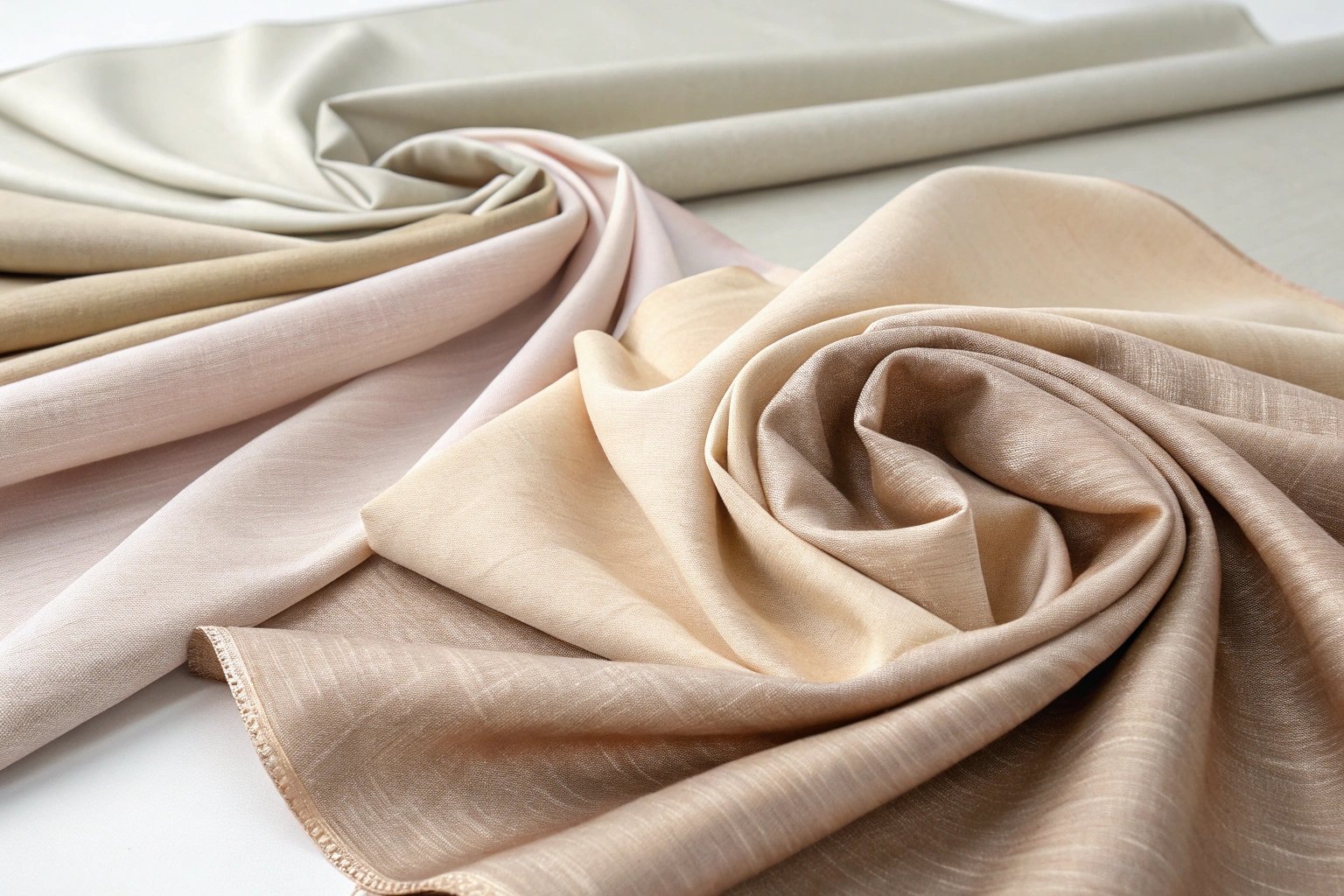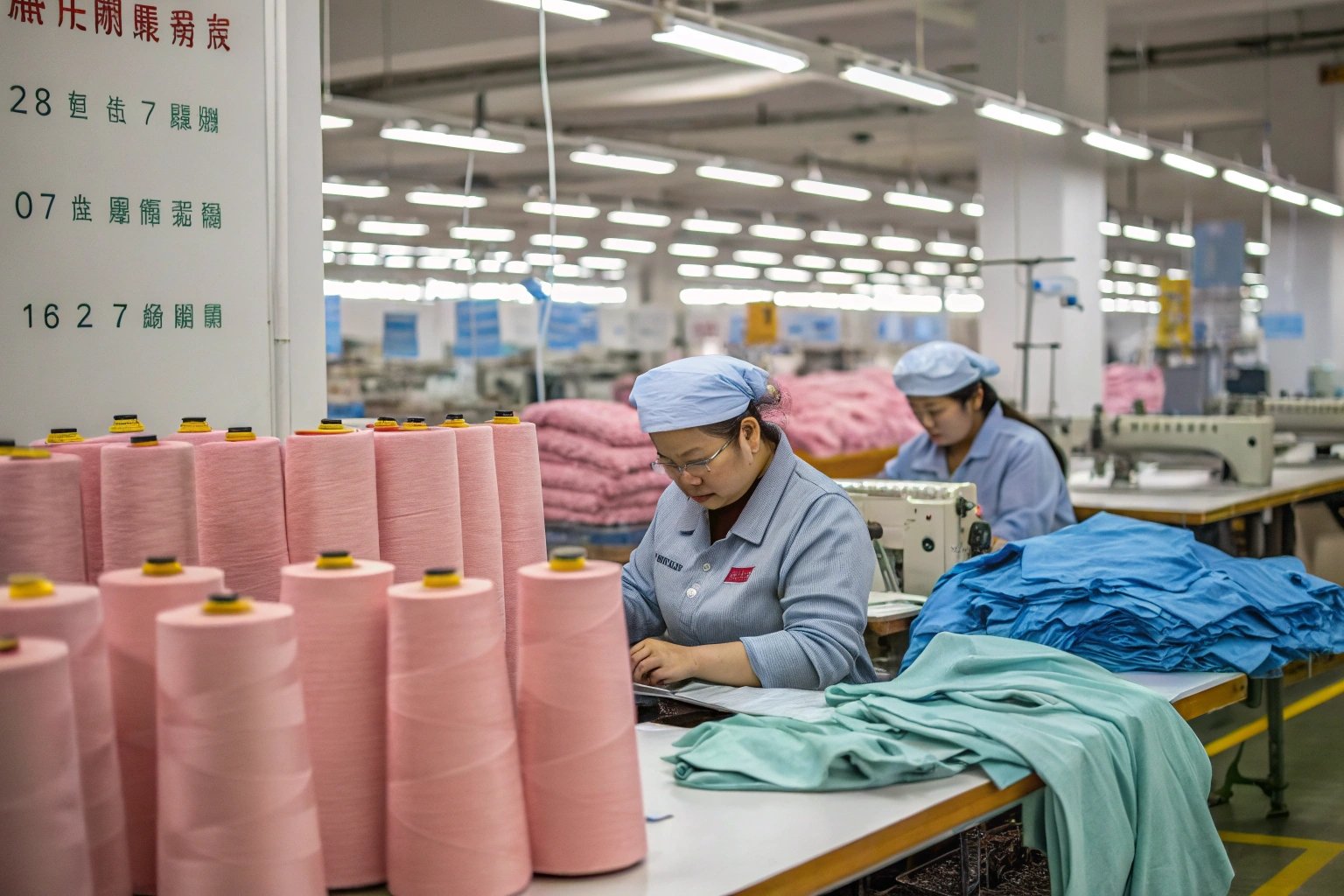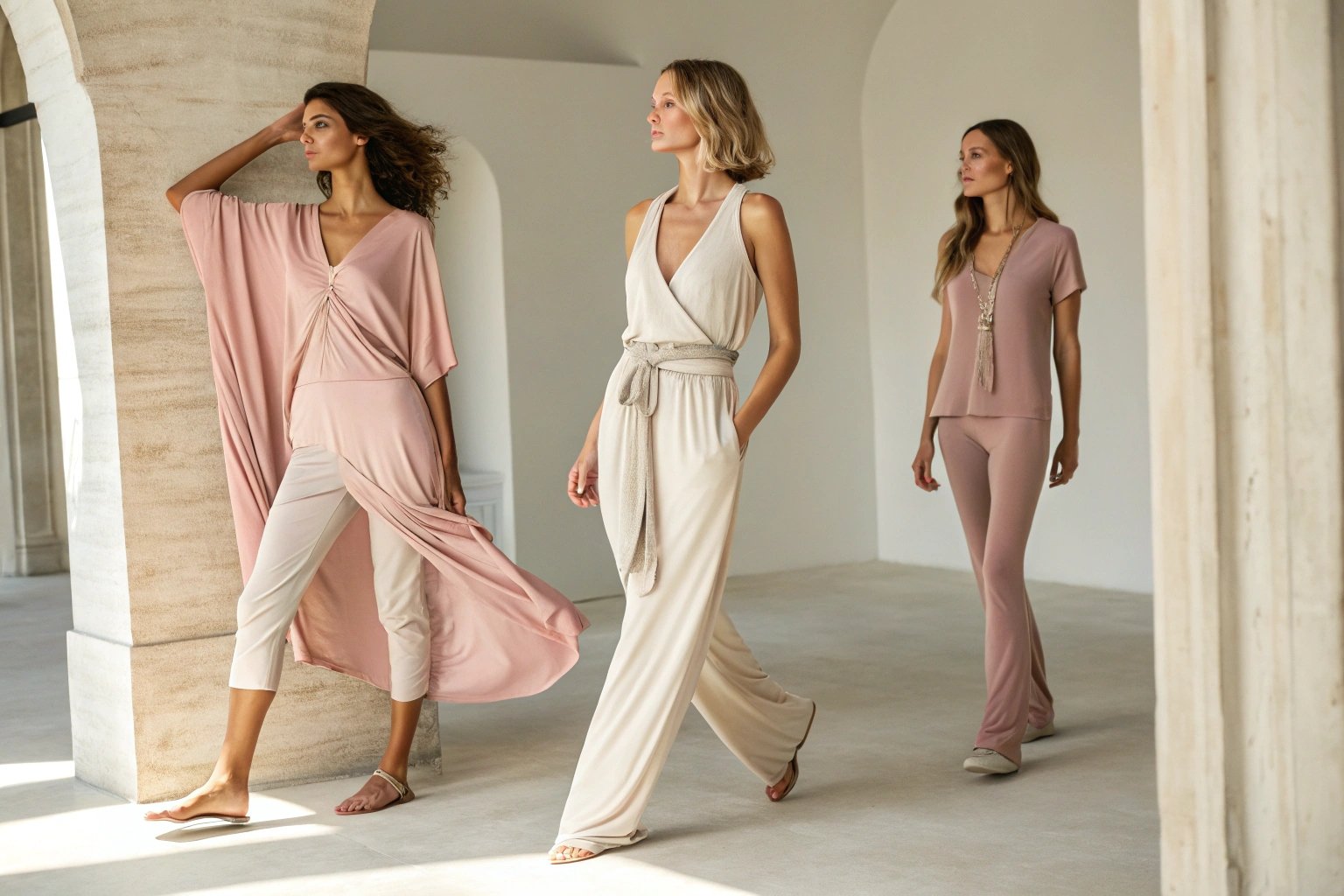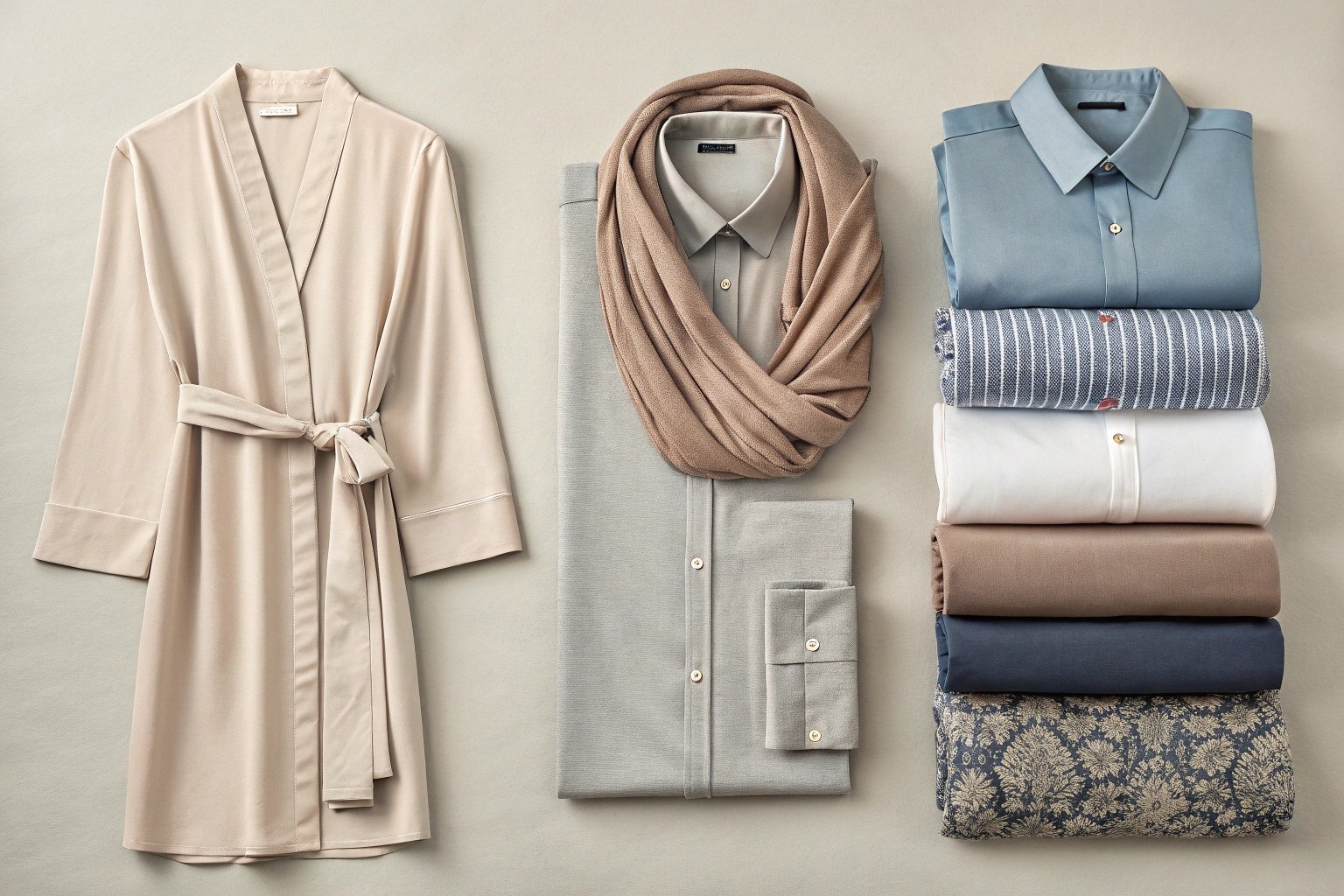Viscose feels like silk but costs a lot less. But what exactly is it?
Viscose is a semi-synthetic fiber made from wood pulp that offers a soft, breathable, and versatile alternative to cotton or silk, widely used in fashion and home textiles.

I used to think viscose was just another fancy name for polyester. That changed when a client requested a summer dress line in viscose—and explained why. It breathes better than synthetics, drapes like silk, and costs much less. Since then, I’ve worked with viscose across everything from yoga tops to flowy skirts. Understanding its strengths (and weaknesses) helps me pick the right material every time.
What is viscose fabric made of?
Viscose is neither fully natural nor entirely synthetic.
Viscose is made from regenerated cellulose extracted from wood pulp, usually from bamboo, beech, or pine trees, and chemically processed to form a soft, usable fiber.

The process starts with wood chips. These get treated with chemicals like sodium hydroxide and carbon disulfide to dissolve the cellulose. After further processing, the liquid gets spun into threads and dried into fabric. That’s why it’s often called “semi-synthetic.” It’s plant-based, but not naturally woven like cotton or wool.
Here’s a simple breakdown of how it compares:
| Material | Origin | Process | Feel | Eco Impact |
|---|---|---|---|---|
| Cotton | Natural plant | Woven directly | Soft, breathable | Water-intensive crops |
| Viscose | Wood pulp | Chemically treated | Silky, drapey | Depends on processing |
| Polyester | Petroleum | Fully synthetic | Smooth, less breathable | Non-biodegradable |
Viscose strikes a middle ground. That’s why it’s used in everything from luxury dresses to sportswear.
Why is viscose so popular in fashion?
Designers love viscose for more than just its price.
Viscose is popular because it’s soft like silk, breathable like cotton, and drapes beautifully, making it perfect for dresses, blouses, linings, and summer wear.

I’ve worked with viscose for wrap dresses, yoga tops, and lightweight joggers. What makes it stand out is its flow. When you wear it, it moves with you. That’s something polyester can’t quite match. It’s also lightweight, which makes it ideal for warm climates.
Many clients request viscose for active-luxe items. It has a clean finish that elevates basics. It dyes beautifully, which is great for color-driven collections. It’s also cost-effective compared to silk, which is great for mid-range pricing strategies.
Is viscose breathable like cotton?
Many assume synthetic = sweaty. But that’s not always true.
Yes, viscose is breathable and absorbent, making it suitable for warm climates or active wear, though not as durable when wet.

I once recommended viscose for a line of yoga tanks. The customer was concerned about sweat—but was surprised at how airy the fabric felt. Unlike polyester, which can trap heat, viscose allows airflow. That’s because the cellulose fibers absorb moisture, then release it quickly.
However, viscose does have one downside: when wet, it loses strength. That’s why we often blend it with spandex or nylon for added durability, especially in sportswear or outerwear. So while it breathes like cotton, it needs the right cut and construction to hold up.
What are the common uses of viscose fabric?
Viscose isn’t just for fashion—it goes beyond that.
Viscose is used in dresses, blouses, linings, skirts, scarves, activewear, upholstery, and even medical supplies thanks to its comfort and versatility.

At Yoplook, we’ve supplied viscose garments to clients across the U.S. and Europe. In summer collections, it’s often the first request. Dresses, especially wrap and maxi styles, benefit from viscose’s drape. We’ve also used it in men’s casual shirts and wide-leg trousers.
Beyond fashion, viscose appears in curtains, bed linens, and even wipes. It’s soft enough for direct skin contact, which makes it popular in babywear and undergarments.
Here’s a quick list of key applications:
| Use Case | Why Viscose? |
|---|---|
| Dresses & Skirts | Soft, drapes well, holds color |
| Tops & Shirts | Breathable, lightweight |
| Scarves | Smooth, non-itchy texture |
| Activewear | Blended for softness and stretch |
| Linings | Silky feel at lower cost |
| Home Textiles | Soft, luxurious look |
What are the pros and cons of viscose?
No fabric is perfect. Viscose has its ups and downs.
Viscose is affordable, breathable, and stylish but can wrinkle easily, weaken when wet, and isn’t always eco-friendly unless sourced responsibly.
Here’s what I’ve found in working with viscose across multiple product lines:
Pros:
- Feels luxurious but costs less than silk
- Absorbs dye well for deep, rich colors
- Lightweight and breathable
- Drapes elegantly
Cons:
- Not very strong when wet
- Wrinkles easily
- Can shrink if not prewashed
- Environmental impact varies by production method
For brands targeting eco-conscious buyers, it’s important to ask your supplier about closed-loop processes or FSC-certified sources. That’s how we help clients meet their sustainability goals without compromising on softness or style.
Is viscose fabric sustainable?
Sustainability depends not just on what it’s made of—but how.
Viscose can be sustainable if it’s made using closed-loop systems that recycle chemicals and use responsibly sourced wood, but not all viscose meets these standards.
Many people assume “plant-based” means eco-friendly. That’s not always true. Traditional viscose production uses harmful chemicals and can cause deforestation if the wood pulp isn’t sourced ethically.
At Yoplook, we work with mills that offer Lenzing-certified viscose. These use a closed-loop system to capture and reuse chemicals. Some even use bamboo, which grows fast and requires less water. We always advise clients to highlight such eco-choices in their branding. It resonates well with younger, conscious consumers.
Conclusion
Viscose blends comfort, elegance, and affordability—making it a fabric worth knowing and using well.

